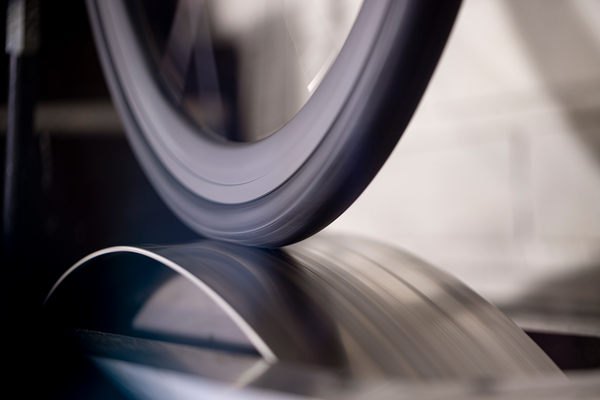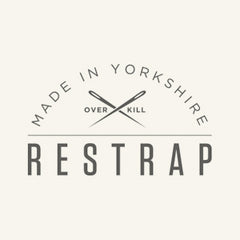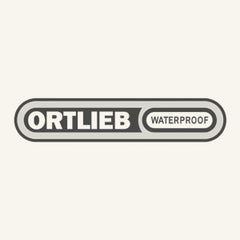Tire Guide // Racing and Endurance Bike
Aug 06, 2025
Tire and tube/tubeless information for road and endurance bikes
Tires are the only point of contact with the road – their choice influences not only speed, but also comfort, safety, and puncture resistance. Especially for racing and endurance bikes, the interplay of weight, rolling resistance, and handling is crucial.
Here you will find an overview of the right tire choice for road bikes – including differences between classic race setups and modern endurance options.
Clincher versus tubeless
First, you should know the three main systems:
- Classic clincher tires (with separate tube)
- Tubeless tires (without tube, with sealant)
- Foldable tubular tires (so-called “open tubulars” – rare)

Classic clincher tires (with separate tube)
When using a clincher tire, a polyurethane tube is more beneficial in the long run than traditional butyl tubes (e.g., from Continental or Schwalbe), as it is significantly lighter, more puncture-resistant, and more durable. For this reason, we'll use the Aeron tube as a reference in the following example.
Aeron tubes have established themselves as a lightweight, compact alternative to traditional butyl and latex tubes—especially among road cyclists seeking optimized weight and puncture protection. The TPU (thermoplastic polyurethane) material allows for very thin, robust tube walls and an extremely small pack size.
Advantages:
-
Significantly lower weight and very small pack size (also ideal as a spare tube)
-
Significantly better puncture protection than classic butyl tubes thanks to the durable TPU material
-
Tends to have lower rolling resistance than classic butyl tubes
-
Easy to use: no sealant setup, no tubeless rim tape required
-
High pressure stability; suitable for common racing bike pressures
- Repairable with suitable TPU patches; good compatibility with most
Disadvantages:
-
More expensive than conventional butyl hoses
-
Installation requires care (more sensitive to pinching during installation)
- Although the puncture protection is very good and significantly better than with butyl tubes, it does not quite reach the level of a high-quality tubeless setup;
- Snakebites are still possible.
Tubeless tires (without tube, with sealant)

Advantages:
-
Fewer breakdowns (self-sealing of small holes)
-
Lower rolling resistance
-
Lower weight
-
A little more comfort due to lower air pressure
- No snakebite (punctures on the rim edge)
Disadvantages:
-
Higher assembly effort
-
Complex tire change on the road
- Not all rims are 100% tubeless compatible
Tubeless technology has now also become popular in road cycling, especially among endurance riders and ambitious amateurs. The latex sealant automatically seals minor punctures – without the need for a tube.
Tire dimensions and rim widths
Tire dimensions and rim widths play a crucial role in safety, comfort, and performance. The tire width must match the rim's inner width to ensure optimal grip, puncture protection, and driving stability. While tires that are too narrow on wide rims are unstable, tires that are too wide on narrow rims can negatively impact ride comfort and cornering stability. The right combination ensures harmonious handling and a long service life for both tire and wheel.
Trend: More and more drivers are switching to wider tires – for comfort, better grip and efficiency on rough asphalt.
Comparison:
-
23–25 mm: very low rolling resistance, light, agile, but uncomfortable and prone to punctures
-
28 mm: modern standard – good mix of speed and comfort
-
30–32 mm: Ideal for endurance, long distances, poor surfaces
- 35 mm+: Only for special frames – almost gravel character
Here is an overview
|
Rim inner width |
Recommended tire width |
Typical use |
Typical ETRTO tire widths |
|
13 mm |
20–23 mm |
Classic racing bike (older bikes) |
20-622, 23-622 |
|
15 mm |
23–25 mm |
Road bike setup (up to ~2015) |
23-622, 25-622 |
|
17 mm |
25–28 mm |
Modern road bike/all-round standard |
25-622, 28-622 |
|
19 mm |
28–32 mm |
Endurance, Allroad |
28-622, 30-622, 32-622 |
|
21 mm |
30–35 mm |
Wider endurance setups |
30-622, 32-622, 35-622 |
|
23 mm |
32–38 mm |
Light gravel, comfort setup |
32-622, 35-622, 38-622 |
|
25 mm+ |
35mm+ |
Gravel & Bikepacking |
35-622 and wider (e.g. 40-622, 45-622) |
Examples of labels
The ETRTO standard specifies tire and rim sizes precisely in millimeters. A tire with an ETRTO 28-622 is 28 mm wide and fits a rim with a diameter of 622 mm—a typical 700C road bike rim.
 Label – Meaning:
Label – Meaning:
-
700×28C – Rim diameter 700c, 28 mm width
-
ETRTO 28‑622 – Standardized: 28 mm width, 622 mm rim diameter
-
TPI 120 – Thread density: the higher, the smoother
-
TL / TLR – Tubeless Ready
-
PSI 95–110 – Maximum air pressure
- Rotation → – Direction indicator
Important information for selection
The maximum tire width depends on the frame and fork. Modern endurance frames often allow up to 32–35 mm.
Basic rule:
-
Narrow tire → light, fast, less comfortable
- Wide tires → more cushioning, grip, safety
In addition, tire pressure has a strong impact on driving behavior:
-
Higher pressure → harder, faster, but worse damping
- Low pressure → more comfortable, better on rough surfaces
A good tire pressure calculator:
👉 www.bicyclerollingresistance.com
Here are some examples of road bike and endurance tires
700×28C – Tubeless Ready (road bike/race)
- Continental Grand Prix 5000 S TR - lightweight race tire with very low rolling resistance
- Schwalbe Pro One TLE – All-round road bike tire, known for good puncture protection
- Vittoria Corsa N.EXT TLR – Race-oriented tire with robust casing
700×32 – Endurance (Comfort/Long Distance)
- Continental Grand Prix 4 Season – durable, puncture-proof tire for all weather conditions
- Schwalbe One Allround TLE (32 mm) – Tubeless-Ready, ideal for endurance and all-road setups
- Michelin Power Cup TLR (32 mm) – comfort-oriented tire with stable lateral grip

Conclusion
The choice of tire depends on your intended use:
- Racers usually use 25–28 mm lightweight tires with low rolling resistance.
- Long-distance riders, commuters, and all-rounders benefit from 28–32 mm tubeless tires with good puncture protection.
In the end, what counts is:
The right road bike tire is the one that suits your style, bike and surface.
If you have any questions about tires and rims, please leave us a comment on this page and we will be happy to answer them!















